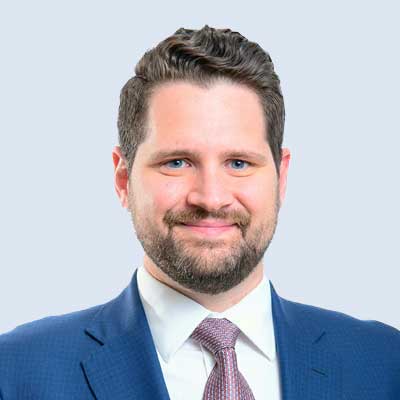Raj Sharan: The biggest challenge we’ve seen recently with many of our clients is the war on talent. I think we have seen that even as we start to see some headwinds in the economy, talent continues to be very important for many companies.
Intro: It’s time for another episode of the Alexander Group Revenue Growth Model Podcast. Welcome and enjoy.
Sean Higgins: Hi, everyone. Sean Higgins here from the Alexander Group, along with my colleague Raj Sharan. We’re both leaders in our life sciences and analytical instruments practice. Alexander Group is a revenue growth consulting firm. We help companies figure out their most vexing commercial issues and problems and how to optimize their commercial models. And we’re here today to talk about the new and contemporary ways organizations are supporting internal talent management. This topic is top of mind for many companies, considering the war on talent or war for talent. To kick us off here. I’m going to ask Raj to talk a little bit about how organizations are focusing on talent from our most recent research.
Raj: Hi, Sean. Thanks so much for having me on this podcast. You’re absolutely right. The biggest challenge we’ve seen recently with many of our clients is the war on talent. I think that we have seen that even as we start to see some headwinds in the economy, talent continues to be very important for many companies. And we see that companies are doing a few different things beyond just focusing on total compensation to ensure that they’re able to retain and attract talent in their organization. This is especially true because the next generation of sellers are very interested in career growth opportunities. Of course, compensation continues to be important, but there are other elements as well. So one thing that companies are doing is they are building what we call as a job architecture framework, which has multiple components. One thing that they’re doing at the start is creating very detailed job profiles. This has existed in the past, but they’re putting a little bit more emphasis on trying to identify within any particular job. What are the different levels like? How many different levels do we want for a particular sales representative? How are those responsibilities different as someone moves through those different levels? And then as you think of opportunities outside of that to promote it, to promote to a manager or a different kind of role like thinking about moving from a medium segment, medium enterprise segment to a large enterprise segment or to move to the global account strategic accounts. What are the expectations of those jobs? That’s all being defined very effectively in the detailed job profiles.
Raj: Now, this is something that’s different than before, and this is really valuable that a lot of the newer sellers are interested in because it gives them a sense for how their career path within a company or organization can look like. The other thing then that companies do is build out a very detailed career path framework that starts with entry level roles. Imagine if you’re an organization, a sales organization, you’ll hire SDRs probably right out of college or people with one or two years of experience. And then you’ll show a vertical and horizontal progression to other roles, right? You can move into additional inside sales role. You could move to generalist field sales role, product specialist. You may decide to become a field application scientists or application engineers. But a lot of different career paths exist within an organization within the sales org itself. But clearly laying this out and calling that a career path framework is really valuable because it identifies to any new sellers you’re trying to hire or sellers have been in your organization for a while. What are the different options that include for them? Oftentimes they’ll also include one or two levels of management roles. Right, and identifying what are the expectations for someone to move from an individual contributor to a management role. But those are some of the things that we are seeing. So pause there. And I know, Sean, you’ve seen some of your clients do different things, especially around sellers who want to showcase their science background with webinars. Do you want to speak to that, Sean?
Sean: Yeah, to that point we’ve seen over the past few years, organizations have transitioned to really account management model or having a single point of contact across the entire customer continuum. In some commercial leaders have highlighted lately through the voice of field feedback is that highly technical instrument sellers do feel slightly devalued through this process. They have to sell the entire portfolio, often consumables or smaller instruments, when they really want to be focusing on what retires their quota the most. So from a change management aspect, how do we keep these incumbents engaged? Some organizations have rethought some of the roles there. Specifically, instead of having a product specialist, maybe this is where you have an in-market specialist. So repositioning some of these folks who understand the workflows and the application specific to those industries like pharma or biopharma or the academia space and changing their job that way. But from a talent perspective as well and a change in the job, how do we start them to work on a few pre-sales activities, thinking from more of a marketing perspective, but not moving to the marketing organization. So how do we get them involved in the community? So going to speaker events where they’re the main speaker or supporting influencer. Or participating and supporting the KOL relationships and more, so it’s really feeding into the science aspect and getting them in the surrounding community versus just the selling and sales motions.
Raj: Yeah, that makes sense, Sean. That’s very interesting. Yeah, we’ve seen that with many of our clients as well, and especially in the post-pandemic environment, making sure that you continue to leverage some of this science background and continue to leverage the virtual environment using webinars as opposed to just in-person events. The next thing, Sean, that we are also seeing with many of our clients is once you have the jobs defined, once you have the leveling defined, once you have a career path framework with the next step that companies are doing is they’re building out competencies and capabilities. Think of the skills that anyone needs in any of these jobs and really codifying what that looks like. What they’re doing is they’re focusing on top 3 to 5 skills per role versus a laundry list that you have used in the past. What this does is this helps you during the interview process and identifying the right talent. But think about of you probably have 30 minutes to 45 minutes to interview any one candidate. You’re able to then focus on 3 to 5 capabilities or skills that you really need for that job and make sure that this person meets those requirements. It also helps with promotions because you can highlight to any candidate who’s interested in promotion up for promotion. These are 3 to 5 skills. This is your existing level. These are the expectations, the next level, and you can really work with them through enablement and training and coaching to get them to the next level.
Raj: Companies, what they’re doing, especially for the internal promotions, right. They’ll do a minimum annual exercise to assess all the sellers on defined competencies. They’re building a proactive plan with each seller to focus on the competencies they should improve upon. Some bigger companies, right, what they’re doing is they’re making a proactive investment in training and enablement. They’re identifying where there are gaps across the organization. Right. If you have defined competencies and you have assessed all of your talent, what you can then do is see where there are gaps in terms of overall organization. And then you can start to fill those gaps with either trading or enablement or refreshing your talent. So those are some of the things that some of the bigger companies that are making a big investment in training and enablement of their talent. And finally, I think during talent acquisition, there’s a lot more velocity in terms of hiring and speed. I think in this market you do not want to be slow. I think that’s one thing that we’ve seen relative to the past where companies are moving a lot faster once they identify the right candidates to make an offer, to get them excited about the company and get them hired and ramped and selling. And Sean, anything else that you’re seeing with your clients in terms of talent acquisition in this hot job market?
Sean: Yeah. Raj a few things we’re seeing from a talent acquisition standpoint is really because many of the organizations we work with are larger in the space, they can offer the high lucrative packages or equity. What they’ve really focused on, like you mentioned, was some of the skill sets in training. But there has been this big emphasis on onboarding training specifically. So how do you facilitate not only the typical aspects of who the organization is, what is the value propositions by product and giving those overviews, but also thinking about in market specialties, what’s going on in the latest and greatest trends there specifically. So they’re going into those customer conversations quicker, and they’re making that part of the value prop when attracting the right talent. So it’s a big emphasis not only on the professional development items you’ve mentioned, but also how do we accelerate productivity in the support mechanisms right when they’re hired? All right. So great. Well, Raj, it’s been great chatting with you and talking about the latest on talent. To learn more, please visit our website at alexandergroup.com. I want to thank everyone for listening to us, and we look forward to sharing more.

